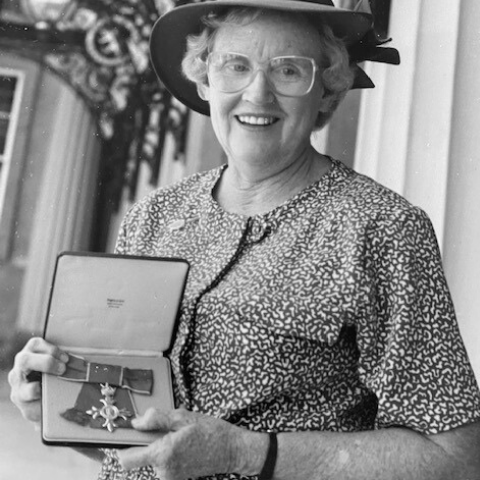Fifty years ago the Australian Physiotherapy Association (APA) elected its first physiotherapist President. Previously the APA had always been presided over by a medical practitioner; which seemed perfectly natural when medical referrals were required for physiotherapy treatment.
The 1970’s was a politically tumultuous period in Australia. After 23 years of federal conservative government rule a progressive labor party intent on major policy reform swept to power on the slogan, “It’s time (for change)”. A central plank of their changes was the development of a universal health system through the nationalisation of the system of payment for medical care and hospitals. According to Margaret Peel, the first physiotherapist APA President, this action was the likely impetus for the massive changes in Australian physiotherapy professionalisation that later spread around the world.
The government’s health system model caused great consternation among the medical fraternity who mistakenly feared nationalisation of service provision and it caused them to focus inward to fight the changes. Subsequently they were more than happy to relinquish their supervisory role over the APA and the profession. At the same time the APA leadership, comprising primarily of private practitioners because mostly they had sufficient spare time to take on such roles, became conscious of the profession’s precariousness in the face of an idealistic government. Like the medical practitioners, private physiotherapists did not want their businesses to be ‘nationalised’. Their response was to get organised.
Before 1972 the APA was a collection of six independent State Associations that sent delegates to twice yearly meetings. According to Margaret, long developed colonial/state rivalries saw “New South Wales and Victoria never agreeing, Queensland always wanting to push on and Western Australia having its own agenda”.
As the APA’s first physiotherapist President, Margaret – a private practitioner from Brisbane, Queensland – immediately set to taking stock. The first action was to incorporate and nationalise the Association. One voice was necessary when communicating on behalf of the profession and State squabbling had to stop. The second action was to determine exactly how many physiotherapists there were in the country so they could determine the size of the profession and compare it with the size of their new national membership.
Concurrently there was a groundswell movement, also led from Queensland, towards primary contact status. Private practice physiotherapists were ‘fed up’ with requiring medical referral before treating even the simplest of problems. The APA repealed its ethical requirement of medical referral and with the consternation of the rest of the world’s physiotherapy associations and at the risk of expulsion of the World Confederation of Physical Therapy (now World Physiotherapy), they moved forward.
Margaret traveled to London to meet with the Medical Protection Society to secure professional indemnity insurance for primary contact physiotherapists and with little support from the Chartered Society of Physiotherapy, who were initially against primary contact status, achieved the goal.
Back home, in the face of broad reaching, government-led, health changes Margaret also regularly traveled the nearly two thousand kilometres round trip to the nation’s capital, Canberra, to meet with government ministers and commissions regarding the inclusion of physiotherapy rebates through the governments own optional private health insurer, and the inclusion of physiotherapy services in hospital and health services, Veterans Affairs, nursing homes and aged care, and workers’ compensation and rehabilitation programs.
It was an extraordinary workload and Margaret was invited to serve two terms as President, to provide continuity in dealing with the politics and continuing changes within the profession. She states she could not have achieved so much without the support of her colleagues and family. In 1989 Margaret received a Member of the Order of the British Empire award for her services to physiotherapy, pictured above.
The physiotherapy profession has many stories of extraordinary women who recognised when it was time for change and worked unflinchingly to achieve it. Margaret Peel led the physiotherapy profession away from its medical patronage heritage and built the foundations for a strong, independent profession. Her greatest achievement was not to ‘liberate’ physiotherapy from medicine but to convince physiotherapists to believe that they were capable of being independent.


Thanks for a lovely informative post, Glenn, and for talking to Margaret about her experiences. Interestingly, New Zealand was going in the opposite direction to Australia in the 1970s – moving away from the state sector and opening up private practice with the Accident Compensation legislation. Prior to 1973 there were only a handful of private practitioners in NZ. So few in fact that they could advertise most of them with a business card-type display on one page at the back of the profession’s journal. After 1973 private practice exploded such that it now makes up over 60% of the entire workforce. I think Norway experienced a similar movement to yours in Australia following the discovery of oil and the ability to build a strong public sector on the revenue. New Zealand’s shift was partly responsible for the decline of cardio-respiratory physio that was almost exclusively in the public sector, and the rise of musculoskeletal practice. Fascinating how political conditions shape how our profession develops.